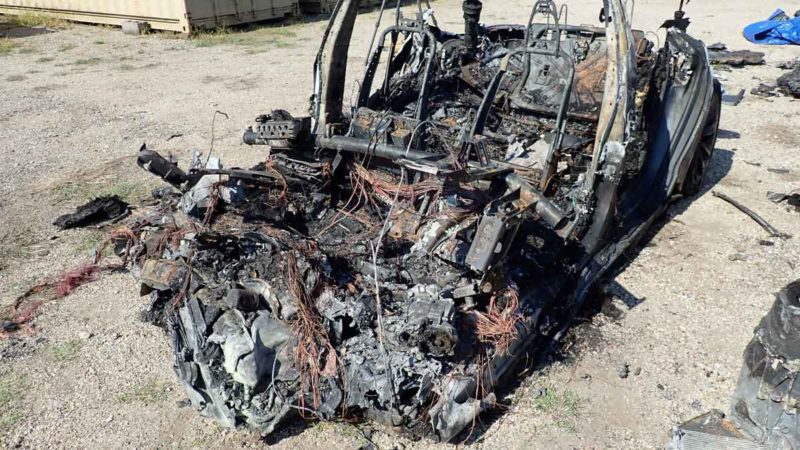The Tesla Model S that was involved in a crash resulting in the death of two men in Texas may not have had Autopilot’s auto-steering feature in operation, a preliminary report released by the US-based National Transportation Safety Board (NTSB) has found.
Neither the 59-year-old and 69-year-old men found dead in the vehicle that crashed on April 17 were in the driver’s seat when found by attending officers, prompting reports that they believed the crash was caused by the car’s advanced driver-assist system known as Autopilot.
Autopilot’s features consist primarily of adaptive cruise control (“Traffic Aware Cruise Control”) and lane-keeping assist known as “Autosteer”. The latter requires defined road edges in order to operate.
The intense media scrutiny was met by Tesla and its eccentric boss Elon Musk with varying statements.
While Musk said that early data logs retrieved by the company indicated Autopilot was not enabled in the car at the time of the crash, at the company’s Q1 2021 earnings call Tesla’s VP of vehicle engineering Lars Moravy said that, “adaptive cruise control only engaged when the driver was buckled and driving above 5 mph, and it only accelerated to 30 mph within the distance before the car crash.”
“As well, the car’s adaptive cruise control decelerated and came to a stop after the driver’s seatbelt was unbuckled.”
The NTSB launched an investigation into the crash with support from the US-based National Highway Traffic Safety Administration (NHTSA), and its preliminary report was released on Monday (US time).
In it, the NTSB confirms Musk’s earlier statement on Twitter that the road in question did not have white lines to define travel lines.
Your research as a private individual is better than professionals @WSJ!
Data logs recovered so far show Autopilot was not enabled & this car did not purchase FSD.
Moreover, standard Autopilot would require lane lines to turn on, which this street did not have.
— Elon Musk (@elonmusk) April 19, 2021
NTSB noted that there were no speed limit signs on the street in question but that the speed limit was 30 miles per hour (48km/hr).
In the report, the NTSB also confirmed that using a similar Tesla vehicle, they were not able to engage the Autosteer feature on that stretch of road, although it was possible to use the adaptive cruise control feature.

The NTSB will analyse crash dynamics, postmortem toxicology test results, seat belt use, occupant egress, and electric vehicle fires in the course of the investigation.
While the USB in the vehicle’s touchscreen console was destroyed in the fire that ensued after the vehicle left the cul-de-sac on which the vehicle’s owner lived and crashed into a tree, a damaged restraint control module which records data associated with vehicle speed, belt status, acceleration, and airbag deployment, was retrieved.

Bridie Schmidt is associate editor for The Driven, sister site of Renew Economy. She has been writing about electric vehicles since 2018, and has a keen interest in the role that zero-emissions transport has to play in sustainability. She has participated in podcasts such as Download This Show with Marc Fennell and Shirtloads of Science with Karl Kruszelnicki and is co-organiser of the Northern Rivers Electric Vehicle Forum. Bridie also owns a Tesla Model Y and has it available for hire on evee.com.au.


